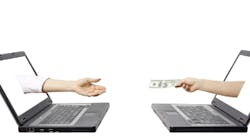Making the switch to electronic funds transfer: How dental providers can reap the benefits
Why haven't more dental practices taken advantage of the profits that can be reaped by using electronic funds transfer (EFT)? Yes, it's a bit of work upfront, but the benefits are numerous.
A new health-care electronic funds transfer (EFT) standard went into effect three years ago, and numerous health-care professionals are now reaping the benefits of time and money savings, but very few dental providers are take advantage of it.
For example, Performance Pediatrics, a small provider practice in Plymouth, Massachusetts, has been able to increase its EFTs from 65% of payments 18 months ago to 90% today, thanks to the new standard. Currently, just 9% of the practice’s payments come in the form of checks. Leveraging new technologies and back office automation that boost efficiencies and increases savings and maintains low overhead allows the small four-person office to remain profitable. Electronic payments not only ensure that Performance Pediatrics receives payments more quickly, but they also cut down on the amount of time spent reconciling accounts.
RELATED READING:Electronic claim attachments: Why are dental offices still lagging behind?
The 2014 CAQH Index reports that providers can save an average of $7.21 per payment by moving from paper checks and explanation of benefits to health-care EFT standard payments and electronic remittance advices (ERAs)/ Yet only 6.4% of claim payments to dental practices are made via the health-care EFT standard. In the past, the lack of an EFT standard placed a heavy burden on providers of all types. Providers interested in receiving EFT payments had to deal with a variety of enrollment procedures, and transactions were often delayed. There was also no standard for reassociation of data, making it difficult to match payments with claims.
As part of the Patient Protection and Affordable Care Act, the new health-care EFT standard, NACHA’s ACH CCD+ Addenda, took effect in January 2014 to help remedy those problems. For health-care and dental professionals, the new standard offers a faster, easier, and less expensive way to handle payments. For example, each EFT payment includes a reassociation number, which makes matching outstanding claims with payments quick and easy for accounting offices. The health-care EFT standard is the only payment method with this feature.
Healthcare EFTs via ACH are also faster than paper checks and card payments. Healthcare EFTs are received as quickly as direct deposit, funds are deposited directly into your bank account, and the transferred funds are available up to seven days faster than with paper checks.
RELATED READING:Dental practices continue to undercharge for services: What you can do to change that
Additionally, health-care EFTs via ACH are more secure than checks, the dominant payment form targeted by fraudsters, and all transactions are compliant with HIPAA privacy standards. The most significant benefit, though, might be the cost savings afforded by using the health-care EFT standard instead of other payment types. The cost of an EFT via ACH payment is, on average, 34 cents. Other EFT payment types, such as wire transfers and credit cards, can cost an average of $10.73 or more per transaction, or more than $7 per check, according to the 2014 CAQH Index.
Overall, the cost reductions and improved efficiencies afforded by the health-care EFT standard could save dental practices, physician practices, and hospitals up to $4.5 billion over the next 10 years, according to preliminary estimates from the Department of Health and Human Services.
Like Performance Pediatrics, dental practices can easily begin realizing the benefits of the new health-care EFT standard. To get started, dental providers can simply contact their dental plans, choose the health-care EFT standard, and provide the dental plan organizations with their payment information. All dental plans must be able to deliver the EFT standard if requested by a provider. Dental plans are not allowed to delay or reject an EFT or ERA transaction, charge an excessive fee, or give providers incentives to use a payment method other than the health-care EFT standard.
Make the switch, and implement the health-care EFT standard into your practice. You too should be reaping the benefits of its savings potential.
For more information on the new health-care EFT standard and how it can help dental practices save time and resources, visit healthcare.nacha.org.

